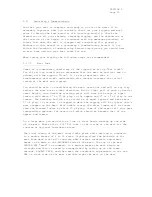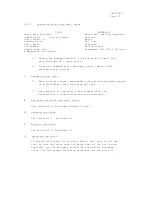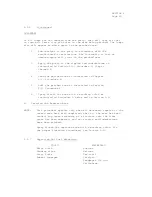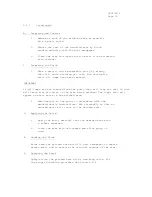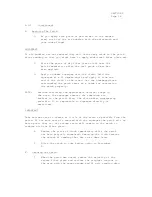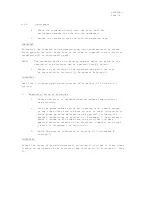
SECTION 6
Page 8
6.2.1
(continued)
b.
Cover the patch with cellophane to start the cure.
Remove the excess putty with a single edge razor
blade (see Procedure D, Steps 4 and 5 above).
c.
When the putty has cured, remove the cellophane
and block-sand the patch with 220-grit
sandpaper as instructed in Step 1 above.
3.
Remove all dust with a white cloth saturated with water.
4.
Wet sand the area with 900 grit sandpaper and water to remove the
scratches resulting from the 220 grit sandpaper.
5.
Wet sand the area with 600 grit sandpaper and water to remove
the scratches resulting from the 400 grit sandpaper.
E.
Buffing the Patch
1.
Attach buffing pad to a heavy duty polisher and apply harsh
grit buffing compound to the pad.
2.
Holding the polishes at a 95 degree angle, buff the patched
area with just enough pressure to remove remaining scratches,
sandpaper, grit, etc.
3.
Restore the gloss to the area by holding the polisher flat
and applying only light pressure.
F.
Spraying the Patch
1.
If you have sanded through the gel coat or other surface
finish (that is, fiber glass is visible) while patching a
damaged area, you must spray the patched area with the
appropriate finishing coat. For the proper finishing
procedures see Section 6.4.
2.
Some types of surface repairs always require a finishing
coat. When these repairs have been made be sure to finish
them in accordance with the procedures given in Section
6.4.
6.2.2
Restoring Gloss
NOTE:
Restoring the gloss to a fiber glass product takes very little
time but enhances its appearance con-
Summary of Contents for Coronado 25
Page 1: ......
Page 21: ......
Page 22: ......
Page 23: ......
Page 24: ......
Page 25: ......
Page 26: ......
Page 27: ......
Page 28: ......
Page 29: ......
Page 30: ......
Page 31: ......
Page 32: ......
Page 33: ......
Page 34: ......
Page 35: ......
Page 36: ......
Page 37: ......
Page 38: ......
Page 39: ......
Page 40: ......
Page 41: ......
Page 42: ......
Page 43: ......
Page 44: ......
Page 45: ......




